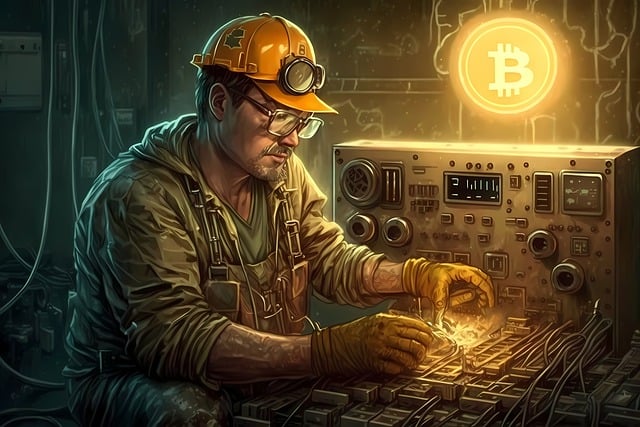2024-02-19

Over the last few years, the topic of cryptocurrencies has increasingly become the focus of public attention. One way to obtain these digital coins is through mining. But what is behind this term and how does it actually work? In the following article, we would like to give readers an insight into the world of crypto mining and explain the steps required to mine digital currencies.
Mining cryptocurrencies is a process in which extreme computing power is used to solve complex mathematical problems and create new blocks in the blockchain. As a reward for this work, the miners receive a certain number of cryptocurrency units. Mining coins requires special hardware and software as well as high computing power. There are different types of mining, such as proof-of-work mining or proof-of-stake mining.
In proof-of-work mining, miners are asked to solve difficult mathematical problems, while in proof-of-stake mining, miners use their own coins as stakes and therefore receive a share of the transaction fees. However, this has an impact on the environment. The high computing power requires a large amount of energy to fulfill the high computing requirements. This can release large amounts of carbon dioxide. However, some cryptocurrency projects have already taken measures to reduce energy consumption and become more sustainable. Unfortunately, energy costs are so high, especially in Germany, that traditional mining hardly pays off.
In the early days of cryptocurrencies, when Ethereum and Bitcoin became popular, it was often enough to have your own PCs or sets of graphics cards to generate computing power. Those days are long gone. For years now, only special ASIC miners have been able to generate returns at all (depending on the price of electricity and the equivalent value of the coins). An ASIC miner (Application-Specific Integrated Circuit) is a specially developed computer chip that is optimized for mining cryptocurrencies such as Bitcoin or Ethereum.
These miners are designed to solve complex mathematical problems and verify transactions in the blockchain. These high-performance machines are much more efficient and faster at mining cryptocurrencies compared to conventional computers. They are produced and used in large quantities to increase the hash rate of the network and thus generate more rewards for mining. Most ASIC miners are designed to be compatible with a specific cryptocurrency, which means that they are not universally applicable. However, there are some models that can support multiple currencies.
A mining pool is a group of miners who pool their resources to jointly search for and validate new blocks in a blockchain. Each miner contributes their computing power and in return receives a share of the rewards for successfully mining a block. The pool operator organizes the work tasks and distributes the rewards according to the contributions of each miner. By working together, smaller users with limited resources can work more effectively and have a higher chance of receiving rewards. Customers can find a number of providers and it is to be hoped that the value of cryptos will increase significantly. This could make mining seriously worthwhile again sooner or later.
<< Will it soon be possible to pay for the Tesla Cybertruck with Dogecoin?Only 5,000 blocks left until the Bitcoin Halving >>